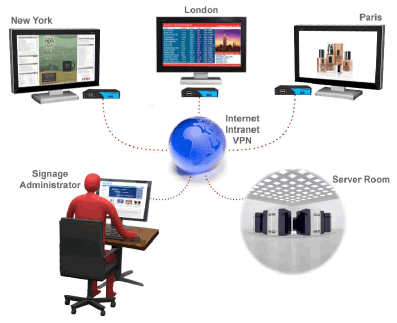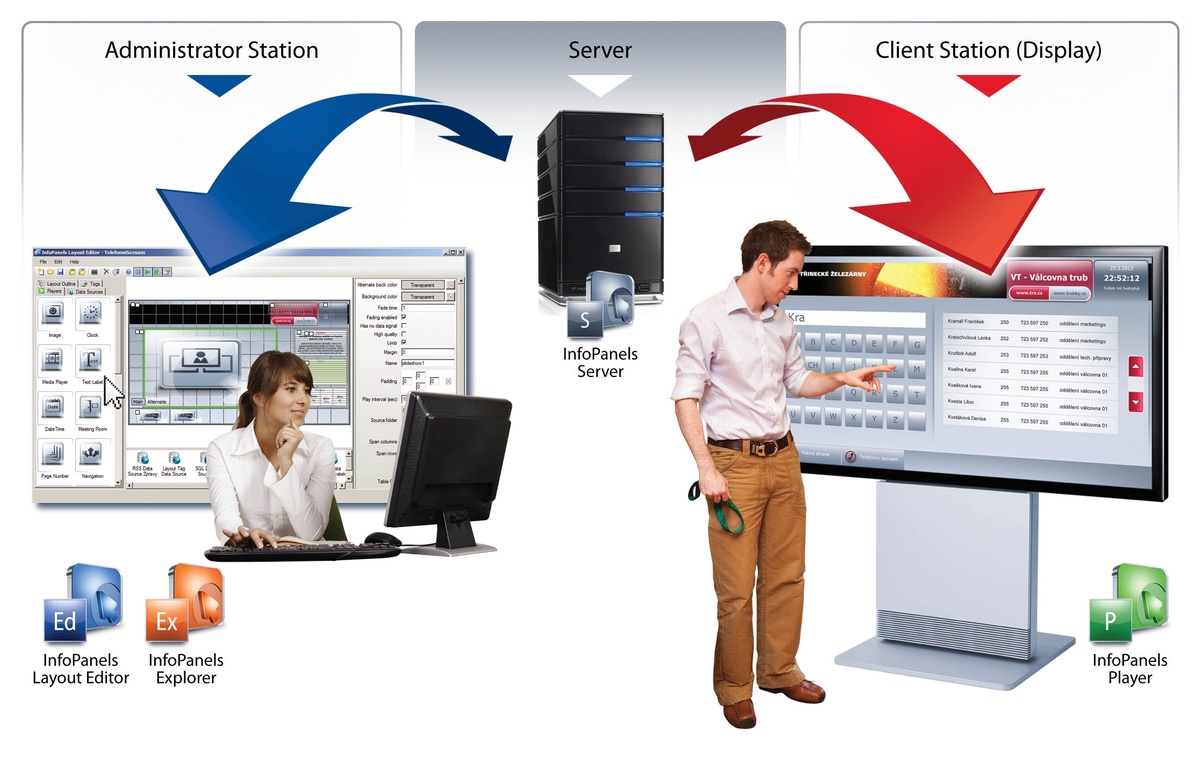
Digital Signage System
Digital Signage System In today's fast-paced world, communication has become a vital aspect of every business and organization. As the digital landscape continues to evolve, traditional static signage is gradually giving way to the dynamic and interactive nature of digital signage systems. These innovative solutions are transforming the way information is conveyed, engaging audiences like never before. This article delves into the world of digital signage systems, exploring their features, benefits, and the impact they have on businesses across various industries.
What is a Digital Signage System?
A Digital Signage System is a network of interconnected digital displays that utilize a combination of hardware, software, and content management to deliver dynamic multimedia content to targeted audiences. Unlike traditional static signage, digital displays can show dynamic content, including images, videos, animations, live feeds, social media streams, and more. These displays are remotely managed through cloud-based software, enabling content updates and real-time changes across multiple screens from a centralized location.
Key Components of a Digital Signage System:
a. Display Screens: The visual centerpiece of a digital signage system, display screens come in various sizes and types, such as LCD, LED, OLED, or even large-scale video walls. These screens can be installed in indoor or outdoor locations, depending on the requirements.
b. Media Players: Media players are the hardware devices responsible for playing and storing digital content. They are usually connected to the display screens and facilitate the smooth playback of multimedia content.
c. Content Management Software (CMS): The CMS is the brain of the digital signage system. It enables users to create, schedule, and manage content across the entire network of displays from a central dashboard. Content can be segmented based on location, time, and audience, ensuring targeted communication.
d. Connectivity: Digital signage systems require a stable internet connection to facilitate real-time updates, content delivery, and data collection for analytics.
Advantages of Digital Signage Systems:
a. Enhanced Engagement: Dynamic content and interactive features capture the attention of viewers, leading to increased engagement and retention of information. This is particularly valuable for advertising, internal communications, and education purposes.
b. Flexibility and Real-time Updates: Unlike static signs that require manual replacement, digital signage allows for quick and easy content updates, even across multiple locations simultaneously. This flexibility enables businesses to adapt their messages to suit changing circumstances and time-sensitive promotions.
c. Cost-effectiveness: While the initial investment in digital signage may seem significant, it proves cost-effective in the long run. Eliminating printing costs and the ability to repurpose content reduce expenses over time.
d. Data Analytics: Digital signage systems can collect data on viewer interactions, such as dwell time and content preferences. This valuable data can be analyzed to optimize content strategies and enhance audience targeting.
e. Remote Management: With cloud-based CMS, content can be managed and updated remotely, making it convenient for businesses with multiple locations or franchises.
Applications of Digital Signage Systems:
a. Retail: In retail environments, digital signage plays a crucial role in enhancing the shopping experience. Interactive displays can provide product information, recommend complementary items, and facilitate virtual try-on.
b. Hospitality: Hotels, restaurants, and entertainment venues use digital signage to display event schedules, wayfinding information, and personalized messages for guests.
c. Corporate Communications: Digital signage is becoming an integral part of internal communication strategies, with companies using it to share news, announcements, and employee recognition.
d. Education: Educational institutions leverage digital signage for campus information, event promotions, and interactive learning experiences.
e. Transportation: Digital signage is deployed in transportation hubs to provide real-time updates on schedules, delays, and directions.
Conclusion:
Digital signage systems have evolved into a powerful tool for effective communication and engagement across various industries. The ability to deliver dynamic content, real-time updates, and data-driven insights empowers businesses to create impactful messages that resonate with their audiences. As technology continues to advance, the potential for digital signage to revolutionize communication and enhance customer experiences will only grow, making it a valuable asset for any modern organization.

Digital Signage System How Its Work?
A digital signage system operates through the integration of various components working together to deliver dynamic multimedia content to targeted audiences. Let's explore how it works:
Content Creation and Management:
The process begins with content creation. Digital signage content can include images, videos, animations, live feeds, social media streams, and more. Content creation can be done using various software tools and design platforms.
Once the content is ready, it is uploaded and managed using a Content Management System (CMS). The CMS serves as the central control hub for the entire digital signage network. It allows users to schedule, organize, and update content across multiple screens from a remote location.
Display Screens and Media Players:
The digital signage system comprises display screens and media players. The display screens can be LCD, LED, OLED, or video walls, depending on the requirements and location. These screens serve as the visual output for the content and are strategically placed in areas with high visibility and foot traffic.
Media players are small hardware devices connected to each display screen. These players are responsible for playing and storing the digital content. The media player reads the content instructions from the CMS and displays the appropriate media on the screen.
Connectivity:
To ensure real-time updates and content delivery, the digital signage system requires a stable internet connection. This connectivity allows the CMS to communicate with the media players and initiate content changes across the entire network.
Content Scheduling and Playback:
Using the CMS, administrators can schedule content playback according to specific time slots, days, or events. For example, a retail store may schedule different promotions to run at different times of the day or week.
When the scheduled time arrives, the media player retrieves the content from the CMS and starts playing it on the associated display screen. The content playback can include single images, videos, or a playlist of multiple media files.
Interactivity (Optional):
Some digital signage systems incorporate interactive features to engage viewers further. Interactive digital signage allows users to interact with the display using touch screens or motion sensors. For example, in a retail setting, customers can use touchscreens to explore product catalogs or request more information.
Data Analytics and Reporting:
Digital signage systems can collect data on viewer interactions, such as the number of views, dwell time, and content preferences. This data is sent back to the CMS and compiled into analytics reports. Data analytics help businesses understand the effectiveness of their content and make informed decisions for future campaigns.
Remote Management:
One of the significant advantages of digital signage systems is the ability to manage content remotely. With cloud-based CMS, administrators can update content, change schedules, and monitor the status of displays from anywhere with an internet connection. This remote management feature is particularly valuable for businesses with multiple locations or franchises.
Final Words:
In summary, a digital signage system works by creating and managing dynamic content through a centralized CMS. This content is then delivered to display screens through media players, offering real-time updates and the potential for interactivity. With the ability to remotely manage and analyze data, digital signage systems have become an essential communication tool for businesses across various industries.


No comments yet